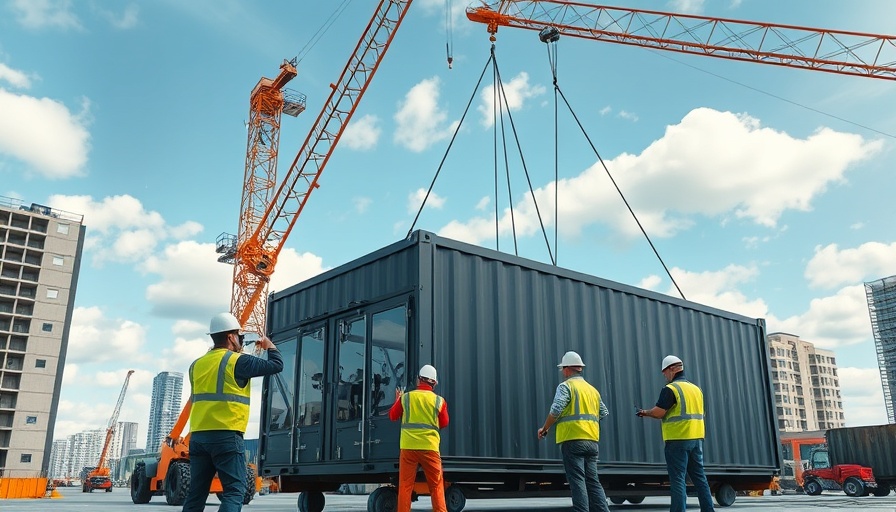
Legacy Building Defects: A Costly Inheritance for Barratt Redrow
In a troubling development for Barratt Redrow, the construction giant has announced a staggering £248 million charge due to major legacy building safety defects discovered across several of its past projects. This revelation comes in the wake of their recent mega-merger, highlighting how long-standing issues in the construction sector continue to unravel costly surprises.
The Cost of Compliance: Historical Context
The current situation is symptomatic of broader challenges facing the construction industry, particularly around building safety and compliance. Historical negligence in addressing safety standards—evidenced by past failures in construction practices—has left many companies, including Barratt Redrow, grappling with significant financial repercussions. These legacy defects can often lead not just to monetary losses but also reputational damage, something that aims to be corrected through proactive measures and transparency.
The Impact of a Landmark Ruling
Recently, a Supreme Court ruling has reinforced the need for companies to take responsibility throughout the supply chain for building defects. CEO David Thomas expressed optimism that this ruling would aid Barratt Redrow in recovering costs associated with these liabilities from third parties involved in the supply chain. This commitment to accountability could pave the way for a more transparent building industry, where companies are required to adhere to safety standards that protect both consumers and their own financial interests.
Financial Health Amidst Challenges
Despite the burden of these new charges, Barratt Redrow's year-end trading statement indicates a solid overall performance. Adjusted pre-tax profits are expected to align with forecasts, showcasing a resilient business foundation. The company’s proactive efforts to integrate its operations with Redrow are also yielding results, with £69 million in cost synergies already realized and projections for further growth in the coming years.
Current Trends in Construction and Remedial Works
As the industry continues to face pressure regarding construction quality, a shift towards rectifying past issues is becoming crucial. Barratt Redrow's announcement of a £98 million charge for external wall systems and fire safety fixes represents a growing commitment across the sector to remediate past mistakes. For builders and contractors, this underscores the importance of investing in quality assurance measures to avoid similar pitfalls.
Looking Ahead: The Future of Building Safety
The developments at Barratt Redrow may signal a turning point for the construction industry. As builders face increasing scrutiny over safety standards, there may be a stronger push towards innovation and improvement in building practices. Future projects will need to prioritize safety, quality, and sustainability as central elements of construction. Successful navigation of these changes will be critical for companies looking to secure their place in a competitive market.
For contractors and builders, understanding these evolving dynamics is essential. Investing in training programs, compliance checks, and robust project management can mitigate risks associated with legacy defects. With the potential for increased regulatory oversight on safety standards, adapting to these challenges will be key for sustained success in the construction field.
As the industry adjusts, stakeholders must also remain vigilant in adapting their practices to meet new regulations and moral obligations toward safety. The ongoing dialogue about building defects and safety measures presents an opportunity for innovation and leadership in an industry poised for change.
Ultimately, while the financial implications of legacy defects are daunting, they serve as a catalyst for growth and improvement in construction standards across the board. Industry players must capitalize on this moment to advocate for better building practices and a safer future for all.
As you reflect on the evolving landscape of building safety, consider taking proactive steps towards enhancing your practices. The industry is changing rapidly, and staying informed and adaptable is crucial for thriving in this environment.
 Add Row
Add Row  Add
Add 




Write A Comment